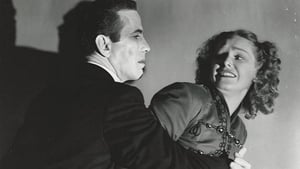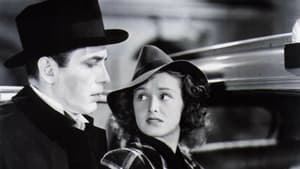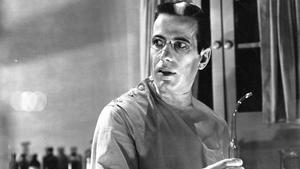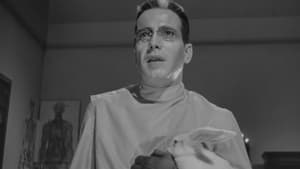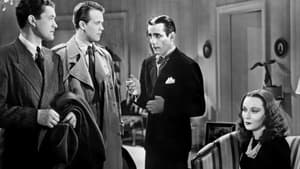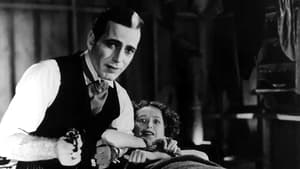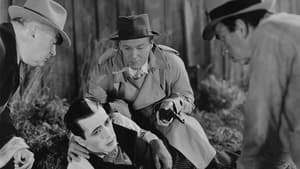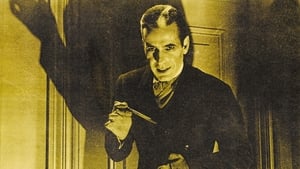Contact: [email protected]
Video Sources 0 Views
- Watch trailer
- The Return of Doctor X

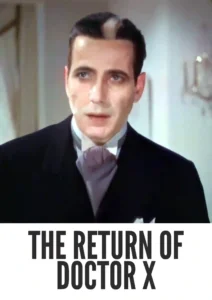
The Return of Doctor X 1939 First Early Colored Films Version
Synopsis
Table of Contents
ToggleReview: The Return of Doctor X (1939) – A Chilling Tale of Science and Suspense

Introduction
“The Return of Doctor X” (1939) emerges from the depths of classic cinema as a chilling exploration of science, suspense, and the darker side of human nature. In this article, we delve into the significance of this early horror film, dissecting its impact on audiences and its enduring legacy in the realm of cinematic terror.
Check The Full Colorized Movies List
Check Our Colorized Movies Trailer Channel
Understanding The Return of Doctor X: Director, Cast, and Genre
Directed by Vincent Sherman, “The Return of Doctor X” (1939) showcases his adeptness in crafting atmospheric horror that lingers in the mind long after the credits roll. The film features a formidable cast, including Humphrey Bogart and Rosemary Lane, whose performances elevate the eerie atmosphere and sinister undertones of the narrative. Blending elements of science fiction, mystery, and horror, “The Return of Doctor X” (1939) immerses viewers in a world where scientific experimentation and human curiosity collide with devastating consequences.
Exploring the World of The Return of Doctor X: Plot and Characters
At its core, “The Return of Doctor X” (1939) follows the harrowing journey of a reporter, played by Wayne Morris, who uncovers a series of gruesome murders linked to a notorious scientist believed to be dead. As he delves deeper into the mystery, he encounters a sinister figure with a thirst for blood and a penchant for experimental science. Along the way, he grapples with his own fears and uncertainties, confronting the very essence of terror in the form of Doctor X.
The Art of Film Colorization
Film colorization serves as a transformative tool that enhances the visual experience of classic movies, breathing new life into timeless stories and captivating audiences with vibrant hues. By digitally adding color to black and white films, colorization allows viewers to immerse themselves in the rich tapestry of cinematic worlds, exploring every nuance and detail with fresh eyes and renewed appreciation.
Early Colored Films: A Brief History
The history of colored films traces its roots back to the early days of cinema, with filmmakers experimenting with various techniques to add color to their creations. From hand-tinted frames to early Technicolor processes, the evolution of colored film has been marked by innovation and ingenuity, paving the way for the development of modern colorization techniques that continue to captivate audiences to this day.
The Return of Doctor X and Its Early Colored Version
The decision to release “The Return of Doctor X” (1939) in a colorized format was met with both excitement and trepidation. While some welcomed the opportunity to experience the film in vibrant color, others expressed concerns about the potential impact on its visual aesthetic. Nevertheless, the early colored version of “The Return of Doctor X” (1939) offers viewers a fresh perspective on the timeless tale of horror and suspense, enhancing its atmospheric qualities and captivating audiences with its eerie beauty.
The Debate Over Film Colorization
The debate over film colorization continues to divide audiences and critics alike, with proponents praising its ability to breathe new life into classic movies and introduce them to a new generation of viewers, while detractors argue that it compromises the artistic integrity of the original work and diminishes its historical significance. As the debate rages on, filmmakers and audiences alike are left to ponder the merits and drawbacks of colorization in the ever-evolving landscape of cinema.
Examining The Return of Doctor X as an Early Colored Film
As with any colorized classic, the impact of colorization on “The Return of Doctor X” (1939) is a matter of personal interpretation. Some may argue that it enhances the film’s visual appeal and immerses viewers in its world, while others may feel that it detracts from the stark beauty of the original black and white version. Regardless of one’s stance on the issue, there’s no denying the enduring power of “The Return of Doctor X” (1939) as a chilling tale of science and suspense that continues to haunt audiences to this day.
Influence and Legacy: The Return of Doctor X’s Impact on Cinema
“The Return of Doctor X” (1939) has left an indelible mark on the world of cinema, inspiring countless filmmakers and captivating audiences with its spine-tingling thrills and atmospheric chills. From its unforgettable performances to its haunting cinematography, the film continues to resonate with viewers of all ages, reaffirming its status as a beloved classic of the horror genre.
Director’s Cinematic Legacy: Beyond The Return of Doctor X
Vincent Sherman’s influence extends far beyond “The Return of Doctor X” (1939), with a diverse body of work that continues to captivate audiences around the globe. From “Mr. Skeffington” to “The Damned Don’t Cry,” Sherman’s films are celebrated for their suspenseful storytelling, compelling characters, and evocative imagery, solidifying his legacy as one of the preeminent directors of Hollywood’s Golden Age. Through his groundbreaking work, Sherman has left an indelible imprint on the world of cinema, inspiring generations of filmmakers to follow in his footsteps.
Themes Explored in The Return of Doctor X
“The Return of Doctor X” (1939) explores a myriad of themes, from the dangers of unchecked scientific experimentation to the timeless allure of forbidden knowledge. Through its chilling narrative and atmospheric visuals, the film invites viewers to ponder the darker aspects of human nature and the consequences of tampering with forces beyond our control. As audiences immerse themselves in the world of “The Return of Doctor X” (1939), they are reminded of the timeless truths that lurk in the shadows and the eternal struggle between good and evil.
Reception and Controversy Surrounding The Return of Doctor X
Upon its release, “The Return of Doctor X” (1939) received mixed critical reviews, with some praising its atmospheric thrills and memorable performances, while others criticized its convoluted plot and uneven pacing. However, the decision to release the film in a colorized format reignited the debate surrounding film preservation and artistic integrity, sparking passionate discussions among cinephiles and scholars alike. Despite the controversy, “The Return of Doctor X” (1939) remains a cult classic that continues to captivate audiences with its eerie charm and spine-tingling suspense.
Where to Watch The Return of Doctor X Online
For those eager to experience the timeless terror of “The Return of Doctor X” (1939), the film is readily available on popular streaming platforms such as Netflix, Amazon Prime, and Hulu. Whether you choose to watch it in its original black and white format or the early colored version, “The Return of Doctor X” (1939) promises to chill you to the bone and leave you questioning the limits of human knowledge and the nature of scientific curiosity.
FAQs About The Return of Doctor X
Q: Is “The Return of Doctor X” (1939) based on a true story? A: No, “The Return of Doctor X” (1939) is a work of fiction, crafted by screenwriter Lee Katz and director Vincent Sherman to explore the darker side of human nature and the consequences of unchecked scientific experimentation.
Q: Who are the main actors in “The Return of Doctor X” (1939)? A: “The Return of Doctor X” (1939) features a talented cast, including Humphrey Bogart in the titular role of Doctor Maurice Xavier, Rosemary Lane as his devoted assistant Joan Vance, and Wayne Morris as the intrepid reporter Walter Garrett.
Q: What awards did “The Return of Doctor X” (1939) win? A: While “The Return of Doctor X” (1939) did not win any major awards, it remains a beloved cult classic of the horror genre, cherished by fans for its atmospheric thrills and memorable performances.
Q: Why was “The Return of Doctor X” (1939) released in a colorized format? A: The decision to release “The Return of Doctor X” (1939) in color was made to introduce the film to a new generation of viewers and enhance its visual appeal for modern audiences. While the choice to colorize the film sparked debate among purists, it ultimately allowed “The Return of Doctor X” (1939) to reach a wider audience and ensure its continued relevance in the annals of cinematic history.
Conclusion
“The Return of Doctor X” (1939) stands as a testament to the enduring power of classic horror cinema, captivating audiences with its atmospheric thrills and chilling narrative. Whether viewed in its original black and white format or the early colored version, the film continues to haunt viewers with its eerie charm and spine-tingling suspense. As we reflect on the legacy of “The Return of Doctor X” (1939), let us celebrate its status as a beloved cult classic that continues to inspire and terrify audiences of all ages.
